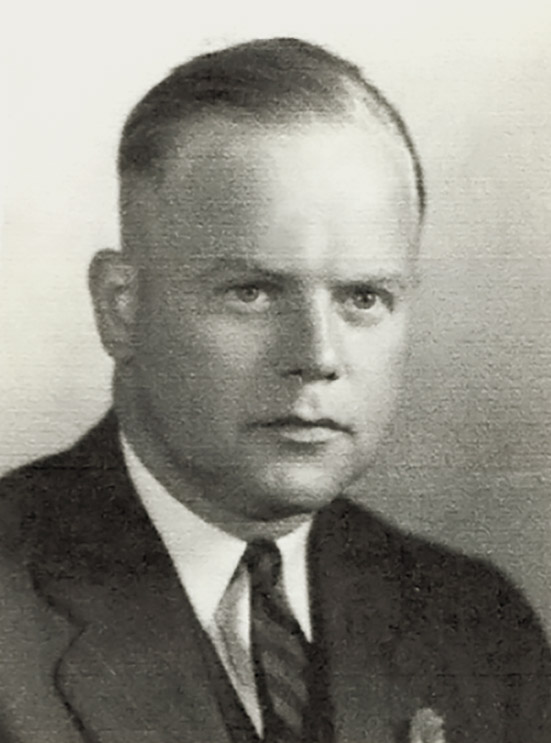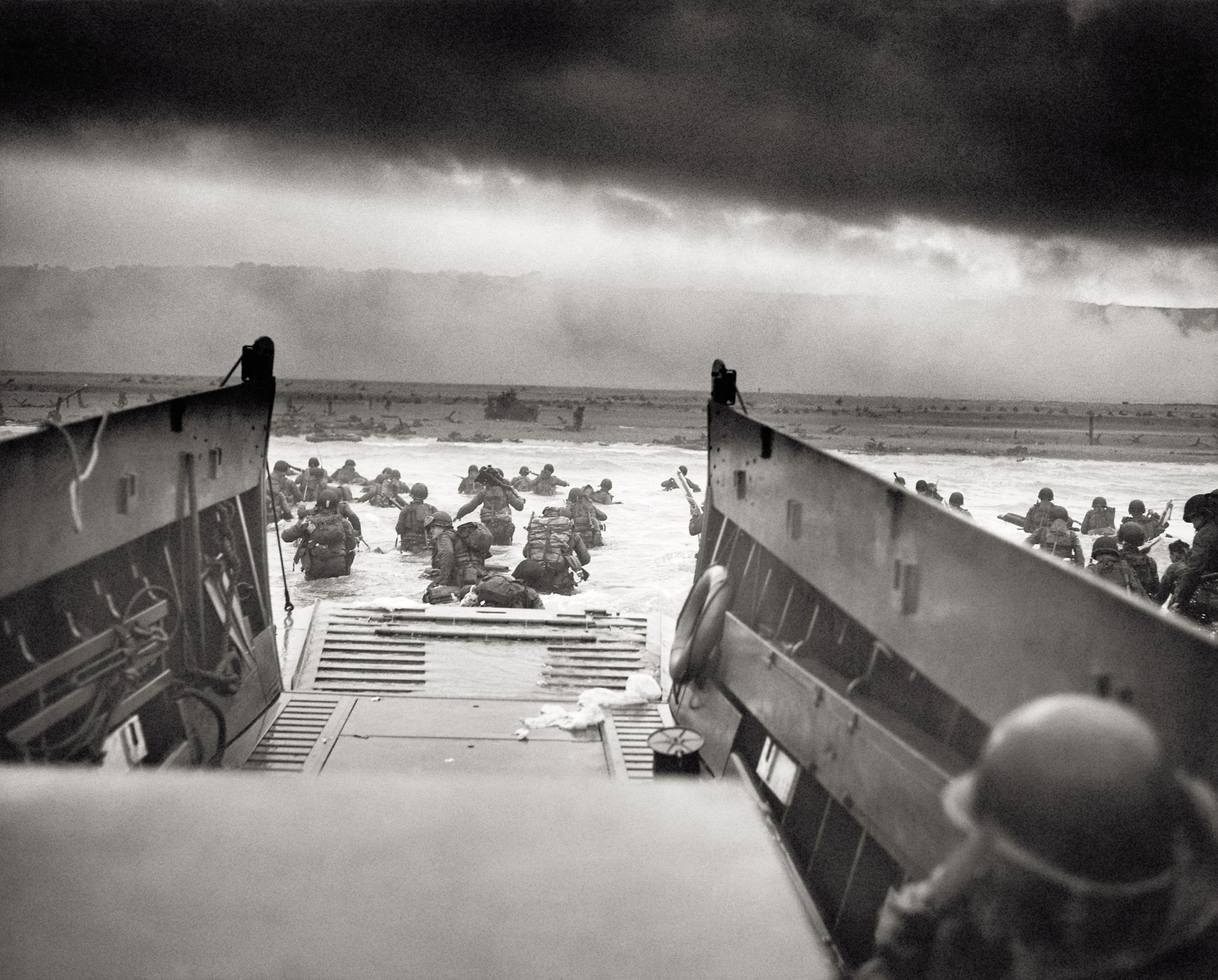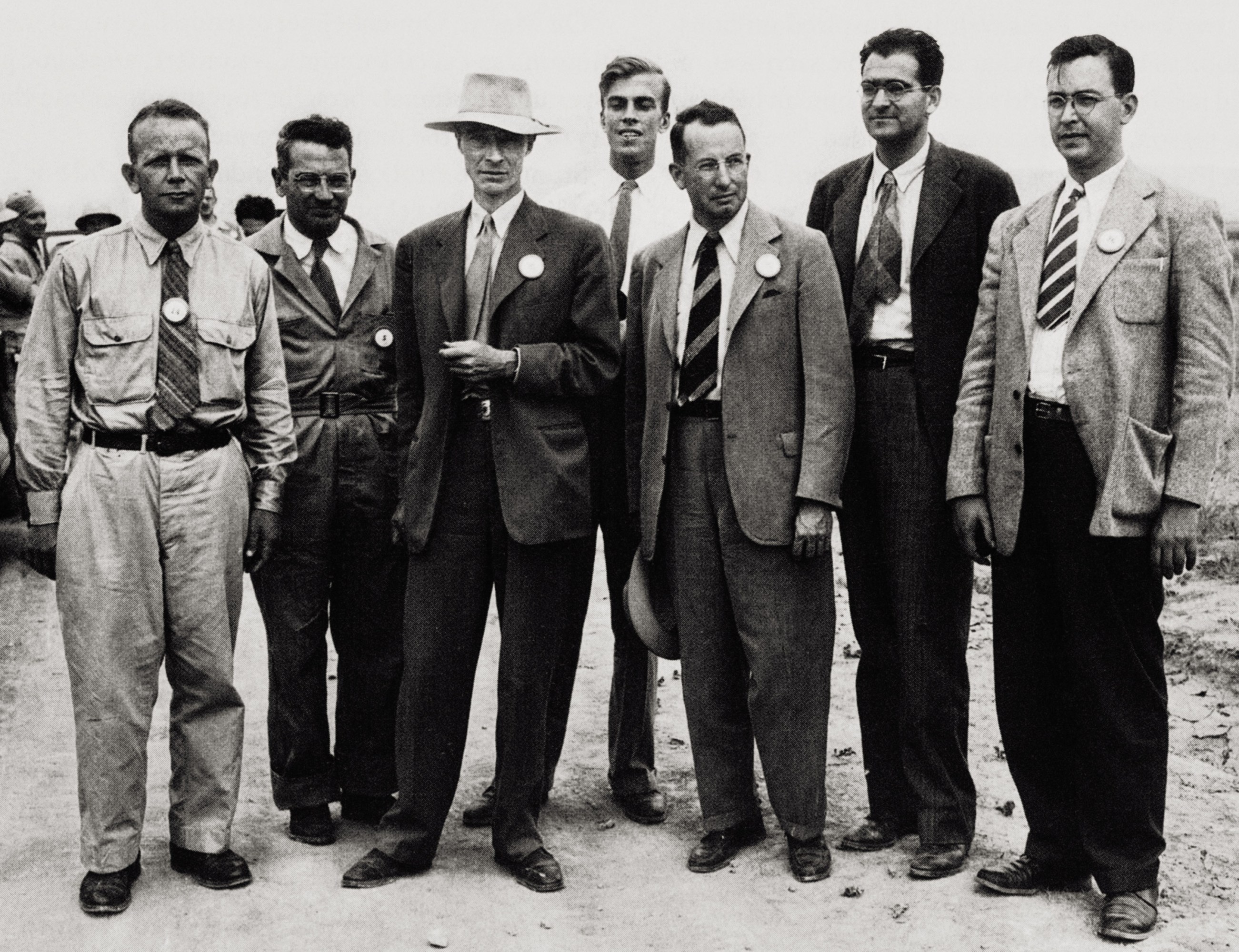William Warin Bainbridge Jr., Class of 1922, and Kenneth Tompkins Bainbridge, Class of 1926, grew up on Manhattan’s Riverside Drive, the eldest of three sons of an upwardly mobile stationer who dabbled in real estate. Both went to MIT. And both would play important roles in World War II—one on the front lines at Normandy and at the Battle of the Bulge, the other with J. Robert Oppenheimer in Los Alamos.

Before making their way to MIT, the brothers attended the Horace Mann School, where they participated in athletics and Ken wrote for the newspaper and the humor magazine. But while Bill was playing hockey, Ken was busy exploring the new medium of radio. “I had a radio with an antenna on the roof [of the family townhouse],” he recalled in 1991. “The antenna and ground were connected across the vibrating contacts, which energized a commercial ultraviolet unit. I must have violated every bandwidth law.” Ken’s five-watt ham radio station had just three call letters: 2WN.
In 1918, Bill arrived at the Institute, where he majored in engineering administration. He belonged to a dizzying number of organizations, including two fraternities (Alpha Tau Omega and Theta Tau), the football team, the wrestling team (which he managed), and the finance and budget committees. Ken joined Bill at MIT in the fall of 1921 to study electrical engineering, ultimately earning both a bachelor’s and a master’s degree through a co-op program with General Electric that required him to spend time at GE’s offices in Lynn, Massachusetts, and summers at the GE campus in Schenectady, New York. Ken, too, pledged Alpha Tau Omega, and he served on the board of MIT’s Voo Doo humor magazine. Master’s in hand, Ken and an MIT friend were admitted in 1926 to the doctoral program in physics at Princeton, where the dean reportedly told them, “You’re nice boys, but it’s too bad you never went to college.”
Despite the dean’s skepticism, Ken rose quickly in the academic ranks—first at Princeton, where he became a pioneering mass spectroscopist; then at Cambridge University’s Cavendish Labs on a Guggenheim fellowship; and then at Harvard, where he built cyclotrons. Along the way, he published the results of an experiment confirming Einstein’s most famous equation, E = MC2. He returned to MIT in 1940 to help found the Radiation Laboratory and played a key role in recruiting scientists and developing radar.
But on September 22, 1943, a letter to the local War Office from President Karl Taylor Compton noted that Bainbridge was unavailable for new local work because his “services were urgently requested by another scientific project of extreme urgency and secrecy.” Since MIT couldn’t refuse, Compton wrote that “Bainbridge was released from the Radiation Laboratory to participate in this new activity.”
The “activity” was “Project Y” at Los Alamos National Laboratory, where Ken and his cyclotron helped develop the first nuclear bomb.
Ken settled at Los Alamos with his wife, Margaret, formerly a member of the Swarthmore College faculty, and their three children. Under Oppenheimer’s direction, he took charge of the Initiator Committee and joined the “high-explosives” group. Then he was given the enormous responsibility of leading the effort to test the atomic bomb, which required working through countless technical and theoretical challenges. He was named head of Group E-9, “to study full-scale implosion assemblies and prepare for the Trinity test,” and Group E-2, which developed instrumentation for the test. In October 1944, Ken became a member of the detonator committee.
The other members of the Bainbridge family also threw themselves into the war effort. Mae, the matriarch, volunteered for the American Red Cross. Youngest brother Don, a Cornell grad, became a lieutenant in the Army Corps of Engineers. Bill, who’d been working in construction for US Gypsum, was commissioned at age 39 as a first lieutenant of the 342nd Engineers (he’d served previously as a second lieutenant early in his career). He headed to the UK in 1942 to become a regimental operations officer, using his building experience to supervise road stabilization and work that required the use of heavy earthmoving machines. By year’s end he’d been promoted to captain, and in 1943 he was transferred to the 254th Engineer Combat Battalion, V Corps.

As an assistant division engineer, Bill spent the first half of 1944 training for the Normandy invasion. At 7:40 a.m. on June 6, 1944, his battalion landed at Omaha Beach. Bill, who was slightly wounded, and four other soldiers “made engineering reconnaissance from behind German lines,” as he would later describe it, to examine German engineering infrastructure. Then they captured five German soldiers and rejoined the remaining members of their battalion on the beach, where they breached the wall blocking the beach exit with 1,100 pounds of TNT. For his actions on D-Day, Bill received a Purple Heart and a Silver Star. He later wrote that on June 8, his battalion “made reconnaissance of a gap in [a] bridge over Vire River, under German observation and fire”; they later bridged the gap.
One of the first battalions to enter Paris, the 254th went on to build multiple bridges, remove obstacles and mines, maintain roads, and assist stalled infantry and armor units as the Allies made their way across France. On September 11, 1944, it was one of the first battalions to reach Germany, where it would destroy 52 fortified positions.
Seven months after D-Day, Bill Bainbridge’s lightly armed battalion helped stop the German panzer divisions in the Ardennes Offensive, better known as Battle of the Bulge, for which the men would earn the Croix de Guerre. On December 17 they withstood two attacks, and managed to prevent supporting German infantry from advancing after a third attack with tanks breached their lines. They held off the Germans for nine hours until relief arrived. Reportedly, the frustrated SS commander was heard to mutter, “The damned engineers!”
Ken Bainbridge famously turned to Oppenheimer after the blast and said, “Now we are all sons of bitches.”
“Our battalion was cut off and fought its way into and then out of the German lines to escape … scattered over a 40-mile front,” Bill wrote. They would go on to cross the Rhine River, where they built a 330-foot floating bridge, the largest tactical bridge in the European theater—fighting Nazi troops all the way.
Injured during the fighting, Bill was hospitalized in France for nearly a month. During that time he met his wife-to-be, Captain Florence Thompson, a nurse from Nova Scotia previously stationed at Boston’s Robert Brigham Hospital. Their wedding announcement in the New York Times could only report that they married in February 1945 “somewhere in France.”
From May to October of 1945, Bill worked on his final assignment of the war: designing and supervising the construction of 18 French camps. These camps, he wrote, had to accommodate “480,000 men who were to return from Germany and prepare for the invasion of Japan.”
That full-out invasion of Japan became unnecessary, of course, thanks to his brother and his Los Alamos colleagues. As Bill was designing the camps, Ken was choosing the site for the first atomic detonation—a spot in the New Mexico desert called the Jornada del Muerto, or “Journey of the Dead Man.”

The world’s first atomic bomb exploded at 5:29:45 a.m. Mountain War Time on July 16, 1945, less than a month before the bombing of Hiroshima and Nagasaki. Ken, who would later call it a “foul and awesome display,” famously turned to Oppenheimer after the blast and said, “Now we are all sons of bitches.”
After the war, Ken returned to the Harvard physics faculty, where he later became department chair. He would also become a prominent advocate of responsible nuclear power and defend academic freedom against Senator Joseph McCarthy. He retired from Harvard in 1975 but remained active professionally until his death in 1996.
Meanwhile, Bill, who had earned the rank of major, returned to civilian life as a building component engineer, developer, and inventor, according to David A. Bainbridge, the son of Bill and Ken’s cousin and author of Game Changer: World War II, Radar, the Atomic Bomb, and the Life of Kenneth Tompkins Bainbridge. Whereas for Ken the war years may have been “his best time,” David says, Ken’s daughter suspects that Bill might have been affected by PTSD.
Even in the midst of war, Bill was still thinking of MIT. From France, he sent a Nazi flag captured from the headquarters of a German panzer battalion to President Compton. “Some months ago,” Compton wrote to Bill in 1945, “we received the large Nazi flag and the small embroidered identification number, which evidently represent some captured trophies and which have elicited much interest as I have shown them to visitors in my office.” Bill wrote back, a little insouciantly: “Dear Dr. Compton: Was most agreeably surprised to hear from you and greatly enjoyed your letter. I am afraid it’s pretty late to start a German trophy collection although in the years to come undoubtedly our wives will make us dispose of stuff we have sent home.”
Ken would also make a gift of sorts to MIT when developing plans for a joint Harvard-MIT cyclotron. “Harvard didn’t care whether it was located at MIT or Harvard. MIT didn’t care whether it was Harvard or MIT,” he said in 1977. “You just didn’t want halfway in between in Central Square, being equally inconvenient to everybody.” So Ken decided to make life more convenient for the scientists of his alma mater, and the cyclotron ended up in Building 44.
“Both the Bainbridge brothers really benefited from their MIT time,” says David Bainbridge. “They were set up perfectly for the roles they were going to play in World War II.” And in very different ways, the two brothers’ contributions helped bring about the end of the war.
Source: technologyreview.com


